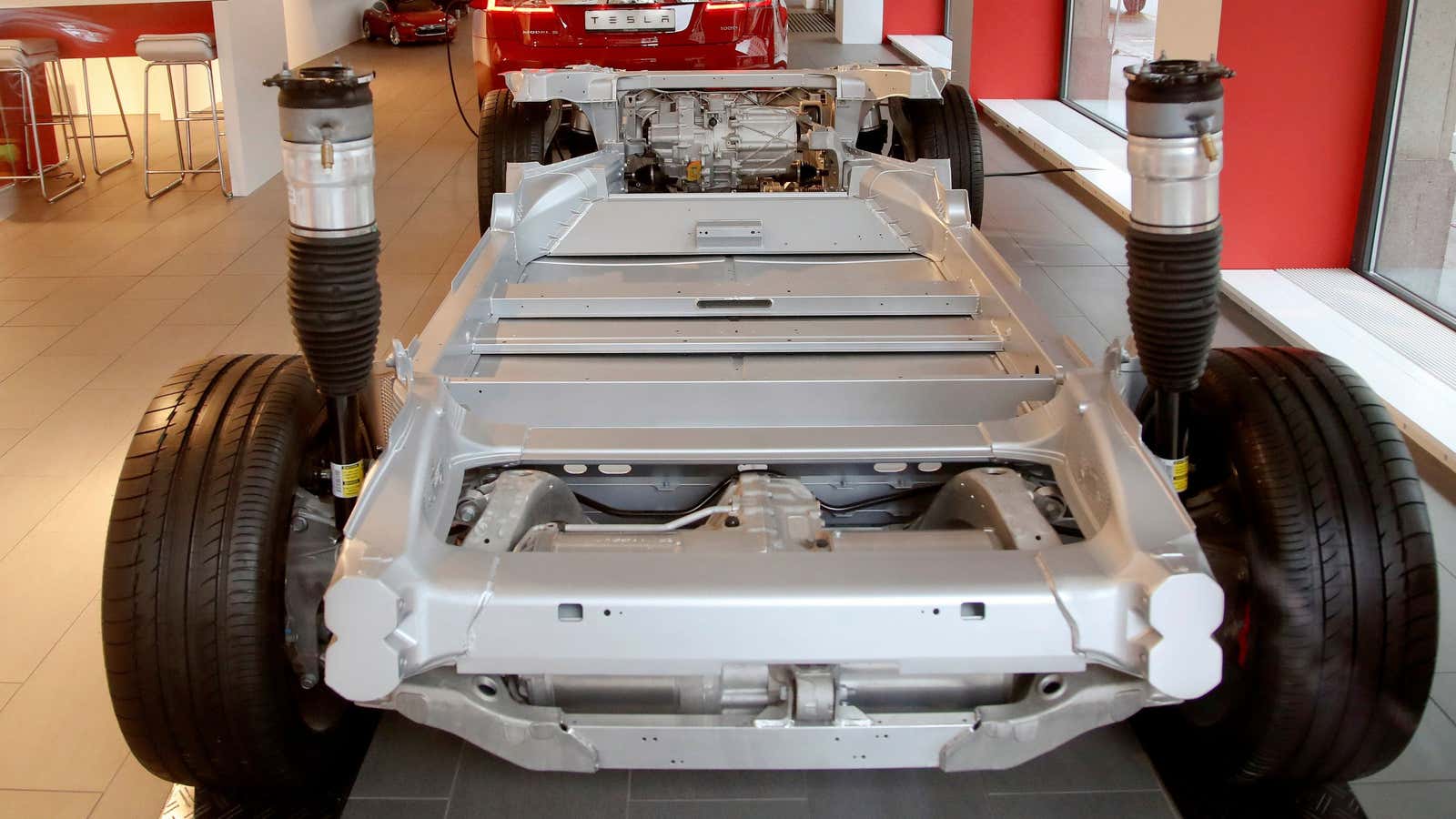Tesla told investors today (May 2) it would deliver the Model 3, and profitability, by the end of 2018, after more than a decade of annual losses. In a letter to investors (pdf) before today’s earnings call, Tesla stated it would be producing 5,000 Model 3s per week “in about two months” after a year of chronic delays.
That’s nowhere close to the 20,000 Tesla originally forecasted to roll off assembly lines weekly by this time, but the company did announce today that it manufactured more than 2,000 Model 3 vehicles for three consecutive weeks this quarter, peaking at 2,270 in one week in April. Hitting the 5,000 per week target will reportedly help Tesla reach a positive net income (excluding non-cash compensation) and full GAAP profitability (accounting principals that typically treat spending on tangible things like new equipment as assets) by the last two quarters of 2018.
As of writing, company stock had fallen 4% for the day in after-hours trading. Musk led a testy earnings call with analysts. After a quick description of the quarter, Musk accepted questions, but began skipping them and threatened to solicit questions off YouTube because “these questions are so dry.” He ended up taking about a dozen questions from one person whose mostly non-financial inquiries were more “interesting.” It’s unclear if that contributed to the dip in Tesla’s stock price after the call which had initially risen 2% in after-hours trading.
Tesla CEO Elon Musk said on the call that the company was restructuring its operations, including reducing the number of contractors, to help achieve profitability late this year. Tesla is also retrenching from its automation efforts for now. “We have temporarily dialed back automation and introduced certain semi-automated or manual processes while we work to eventually have full automation take back over,” the company stated while saying it was “as committed to [its automation strategy] as ever.”
Musk said he was”feeling confident” about reaching profitability in 2018. “This is not a certainty but it does appear quite likely in my view,” he told those on the call.
To do that, the company will need to get as many Model 3s out of the factory as possible to generate cash to fund the car’s production ramp. If it falls behind, the company will likely have to continue turning to Wall Street for funding. As Tesla has increased spending in the last two years, the company has issued billions in debt and equity to keep pace.
The electric carmaker’s fortunes are inextricably tied to that of its first mass-market vehicle, the $35,000 Model 3. After producing a string of luxury cars—the Roadster (2008), the Model S sedan (2012) and the Model X SUV (2015)—Tesla is entering the big leagues with a ubiquitous electric car that can offer average drivers an alternative to the internal combustion engine. Tesla aims to make 500,000 cars by 2020, more than it has produced since its founding in 2003.
Characteristically, Tesla’s strategy has defied convention. Whereas most carmakers have spent years perfecting production lines, and are now incrementally adding automation, Tesla went all in from the start. CEO Elon Musk boasted in 2016 that Tesla’s Fremont, California facility would be the “most advanced” car factory on the planet. Now, he’s admitted Tesla overreached and had to redesign much the factory from scratch. “We had this crazy, complex network of conveyor belts…and it was not working, so we got rid of that whole thing,” he told CBS in an interview aired in April.
Money and employees have papered over some of those problems. To achieve even low levels of Model 3 production, the number of Tesla employees has roughly doubled over the past year, and its quarterly rate of financial losses has soared into the hundreds of millions thanks to money spent on manufacturing. That convinced Moody’s to downgrade Tesla’s corporate debt deeper into junk-bond territory (from a B2 rating to a B3), while lowering its outlook from “stable” to “negative.”
